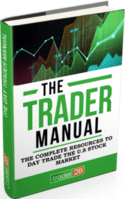Day trading is a style of trading that can be profitable if done correctly. This type of trading involves trading for a very short period of time, usually no more than a day. Because time is so short, day traders rely heavily on technical analysis to make quick and accurate decisions. If you’re looking for a fast trading style that doesn’t require you to hold overnight, day trading may be right for you! All investors who wish to learn how to invest and/or experiment with new trading tactics. In my opinion, the finest Stock market game is TraderFi Game.
Day traders often prefer to pick a side at the beginning of the day, trade on discomfort and close their positions with a profit or loss at the end of the day. This style of trading is attractive to many traders because it allows them to take advantage of short-term market movements overnight with minimal exposure. Day trading is a great opportunity for traders who have the time, experience and resources to monitor the markets throughout the day. Short-term price action tracking is an important tool that day traders use to determine optimal entry and exit positions.
You may be a day trader if:
You can watch the market all day.
Good understanding of technical analysis and indicators. Prefer short-term trading over long-term trading.
In the end, you want to know if you won or lost.
You cannot be a day trader if:
Do you want to trade long or short? You have a conservative approach to trading. I don’t have time to watch the market in real time.
You work the day shift. Important considerations for day traders
The basics are important
As a day trader, it is important to stay up to date with important news and announcements that may affect your trading. Make sure you have time to review the transaction.
You must be able to monitor the market in real time and make quick decisions based on technical analysis or fundamental events. If you don’t have time because of a 9-5 job, day trading may not be for you.
Types of day trading
Day funded traders
looking to maximize their profits for the day often use a variety of strategies to maximize their profits.
Trend trading
Trend trading is a type of intraday trading where you predict that the price of a currency pair will continue to move in a certain direction. If you think the price will go up, you buy a currency pair and hope to sell it later at a higher price than you paid. This can be a good strategy if you can accurately predict which way the market will go. Using short-term time frame indicators allows day traders to get an idea of when to enter for maximum profitability.
By looking at short-term momentum indicators such as the Relative Strength Index (RSI), stochastics and moving averages, day traders can identify potential entry points with short-term profit potential. In day trading, it is important to look at longer time frames first to understand general trends. This can be an hourly, daily or weekly chart. Once you’ve identified a trend, you can switch to a chart with a shorter time frame, such as a 5-minute chart, and use the momentum indicators mentioned above to find data.
Countertrend trading
Day traders like to trade against trends. This is called trading against the trend. For example, look at when prices rise and then start to fall again. When this happens, they sell the currency pair and hope to buy it later at a lower price than what they sold it for. This can be a good strategy if you can accurately predict when the trend will change. You may also play best trading games such as TraderFi.
Day traders commonly utilize counter trend trading to profit from short-term market movements. The goal is to recognize when the market begins to shift direction and enter a position against it. This method is dangerous since you may end up on the wrong side of the trend.
large-scale trading
When the price is “in a range,” trade. That means that costs do not fluctuate significantly. This can be an effective technique because it carries less risk than trend trading and does not necessitate as close monitoring of the market. Range traders meticulously scrutinize chart patterns to find common highs and lows that occur during the day, paying particular attention to the variances between these points.
Support and resistance levels are one of the most common trading tools, and traders wait for these levels to climb. A day trader that follows a range trading technique and buys when the price of a currency pair recovers from a lower support level. A trader intending to sell will do so when the currency pair’s price recovers from a higher resistance level. Stop losses and limit orders are commonly used by traders to verify that their trades are compatible with current market circumstances.
Breakout Trading
Breakout Trading is a popular trading strategy used by day traders to profit from excessive market volatility. The goal is to wait for the currency pair to break through a significant support or resistance level before making a trade in the direction of the breakout.
This is especially beneficial when the currency pair is trading in a narrow range and the breakout happens following a period of low volatility. The idea here is to recognize major market events and be prepared to capitalize on them.
News offers
News trading is a sort of day trading that looks for potential chances in news and economic events. Traders that use this technique frequently monitor news reports for opportunities to profit from market changes. Because unexpected news or events might have a large impact on the market, this can be an extremely dangerous strategy. Technical analysis is commonly used by news traders to monitor price changes and find potential opportunities to profit from short-term market movements. Fundamental analysis is also used to evaluate news and discover potential trading opportunities. News traders, on the other hand, pay less attention to charts and technical analysis. Day traders that use news trading as a technique anticipate financial news and data releases and anticipate big price fluctuations as a result of such reports.




